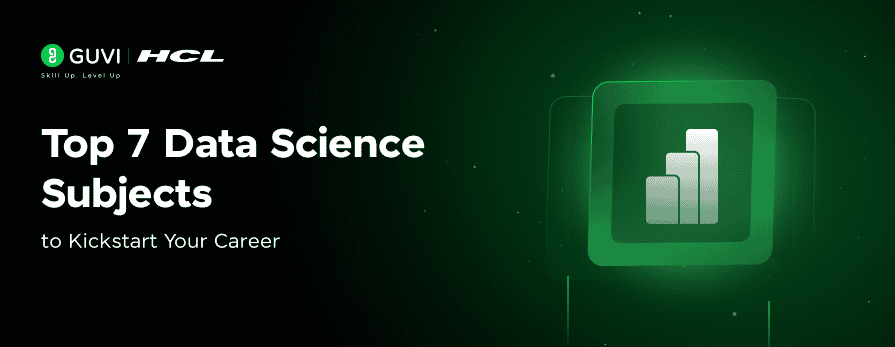
Top 7 Data Science Subjects to Kickstart Your Career
Oct 09, 2025 5 Min Read 1385 Views
(Last Updated)
Data Science is one of the top skills in this digital world. Most of the companies are moving towards data-driven strategies to serve their customers effectively. This blog covers the top 7 data science subjects that are necessary for a data scientist in their daily life.
We also provide you with the necessary resources, certifications, and important concepts in each subject to smooth your data science journey. Stay tuned till the end!
Table of contents
- What is Data Science?
- Top 7 Data Science Subjects
- Mathematics and Statistics
- Programming
- Data Visualization
- Data Mining
- Machine Learning and Artificial Intelligence
- Database Management
- Big Data
- Best Data Science Certifications
- Getting Started with HCL Guvi
- Conclusion
- FAQs
- Q1. Do I need coding for data science?
- Q2. Is DSA required for data science?
- Q3. Which language is best for data science?
- Q4. What industries hire data scientists?
- Q5. Is data science a good career for freshers
- Q6. What are the subjects for data science?
What is Data Science?
By the name itself, we can say that it is a science about data. Data science is the study of data to extract meaningful information and insights. Data science is used to provide a data-driven solution to real-world problems. It includes maths, statistics, machine learning(ML), and artificial intelligence(AI).
Top 7 Data Science Subjects
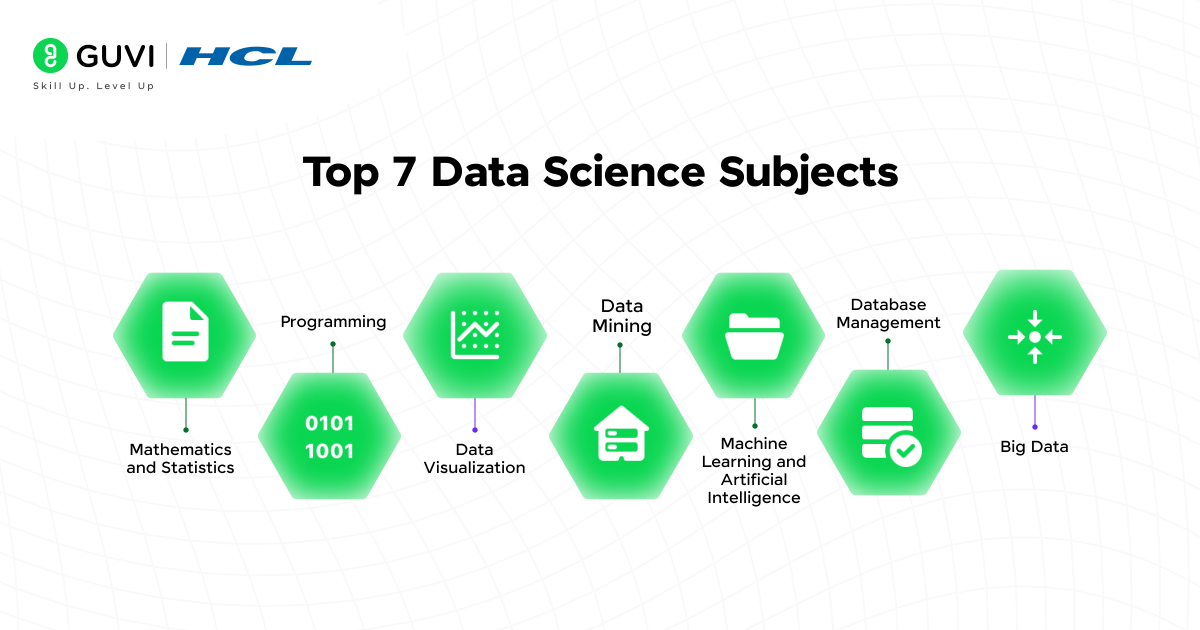
The lifecycle of a data science project consists of six crucial steps such as data collection, cleaning, transforming, exploratory data analysis, model building, and deploying. Each step requires a different skill and approach. Let’s look into the skills required for each step in the data science project lifecycle, along with the important topics in each data science subject.
1. Mathematics and Statistics
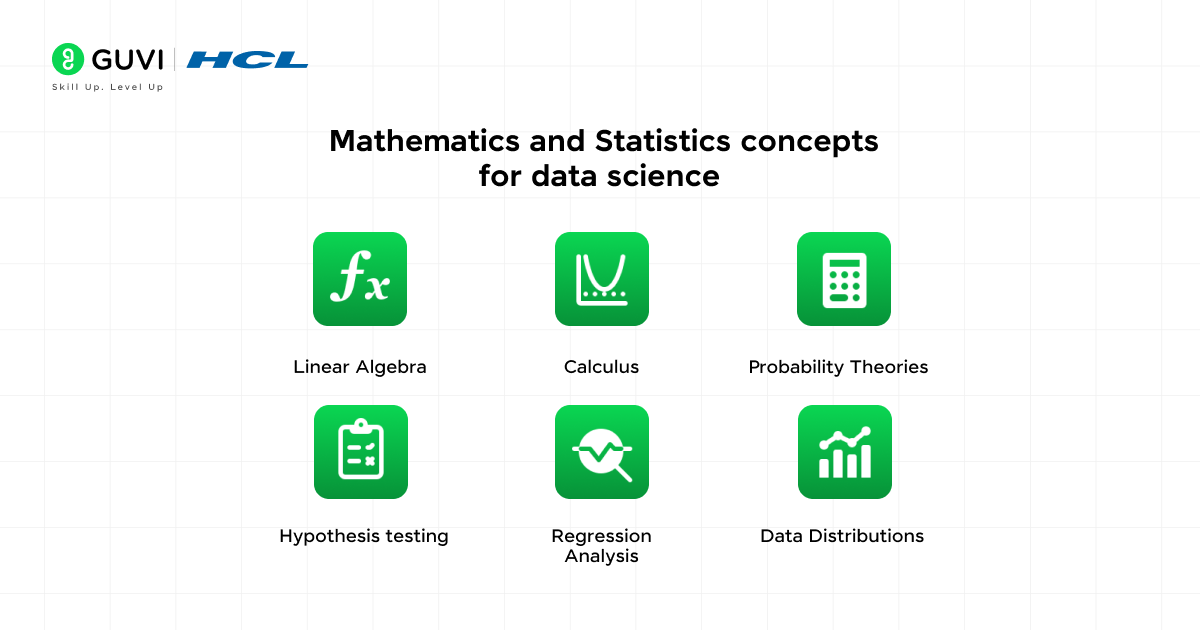
Mathematics and Statistics are the fundamentals of data science; you must have a strong understanding of these subjects. These are essential skills for data collection, cleaning, and analysis. Important mathematical and statistical concepts include:
- Linear Algebra: It is fundamental to handle datasets such as matrices and vectors. It is helpful in matrix multiplication, transformations required for manipulating large data sets.
- Calculus: Differential calculus is crucial for optimizing machine learning models. It helps in minimizing loss functions using techniques like gradient descent.
- Probability Theories: These are the backbone of statistical and machine learning modelling. It helps in estimating uncertainty, modeling random events, and making predictions.
- Hypothesis testing: It is used to make data-driven decisions by validating assumptions. Tests like t-tests, chi-square are commonly applied in A/B testing and experimentation.
- Regression Analysis: It models the relationship between dependent and independent variables. It is used for prediction, trend analysis, and understanding the influence of variables.
- Data Distributions: It describes how values are spread or clustered across the dataset. It helps select the right statistical methods.
2. Programming
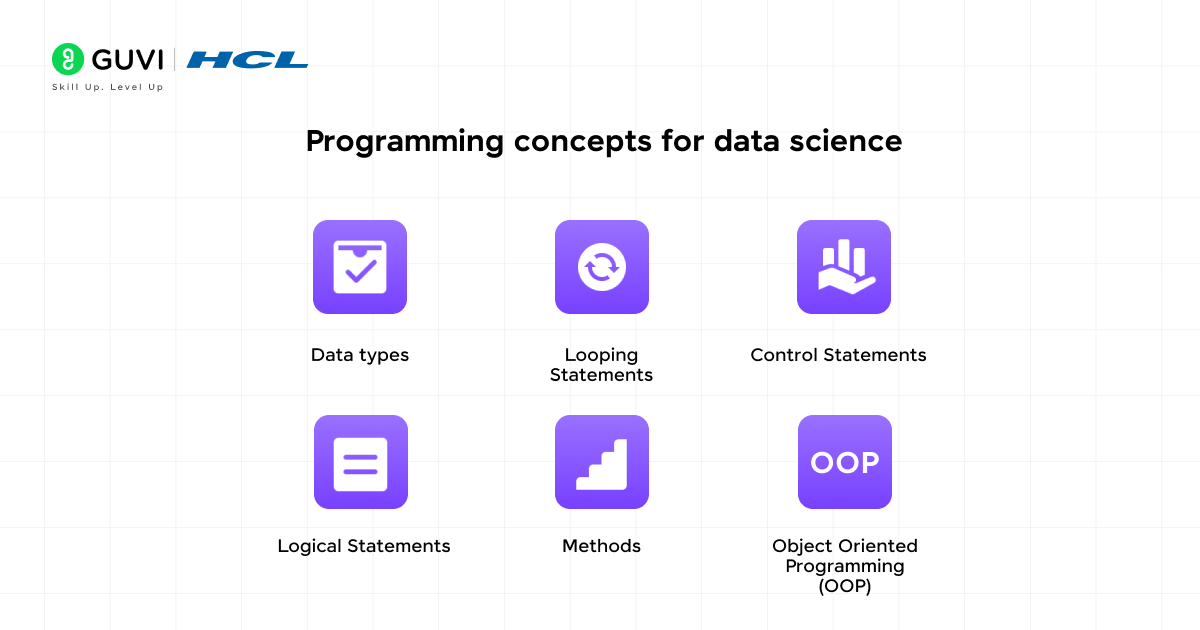
Programming languages are the basic building blocks for a data science project. There are various object-oriented programming languages, but for data science-related tasks, you have to choose a programming language that is easy to understand, integrate, and implement artificial intelligence and machine learning algorithms. The best programming languages for data science are Python, Scala, and R. These languages are not only easy to learn but also helpful in handling, manipulating, and analyzing data.
You should have a strong understanding of fundamental programming concepts such as variables, functions, classes, objects, and other object-oriented programming principles.
- Data types: It is a fundamental concept for a programming language. It defines the kind of data a variable can hold. Python supports a variety of data types like int, float, char, and bool.
- Looping Statements: It allows you to repeatedly execute a block of code until the condition is false. These statements are essential for tasks like iterating over arrays and repetitive calculations. Looping statements include for, while, and do…while.
- Control Statements: This statement manages the executional flow based on conditions. It includes if, else, switch, break, continue, and goto, enabling decision-making and branching in code logic.
- Logical Statements: It uses operators like and, or, and not to form complex conditional expressions. These statements are used in control flows to determine whether the conditions are true or false.
- Methods: It defines a reusable block of code that performs specific actions.
- Object Oriented Programming (OOP): Python is an OOPs language that includes four main pillars such as encapsulation, inheritance, polymorphism, interfaces, constructors, and abstraction. These principles help to organize and maintain code.
3. Data Visualization
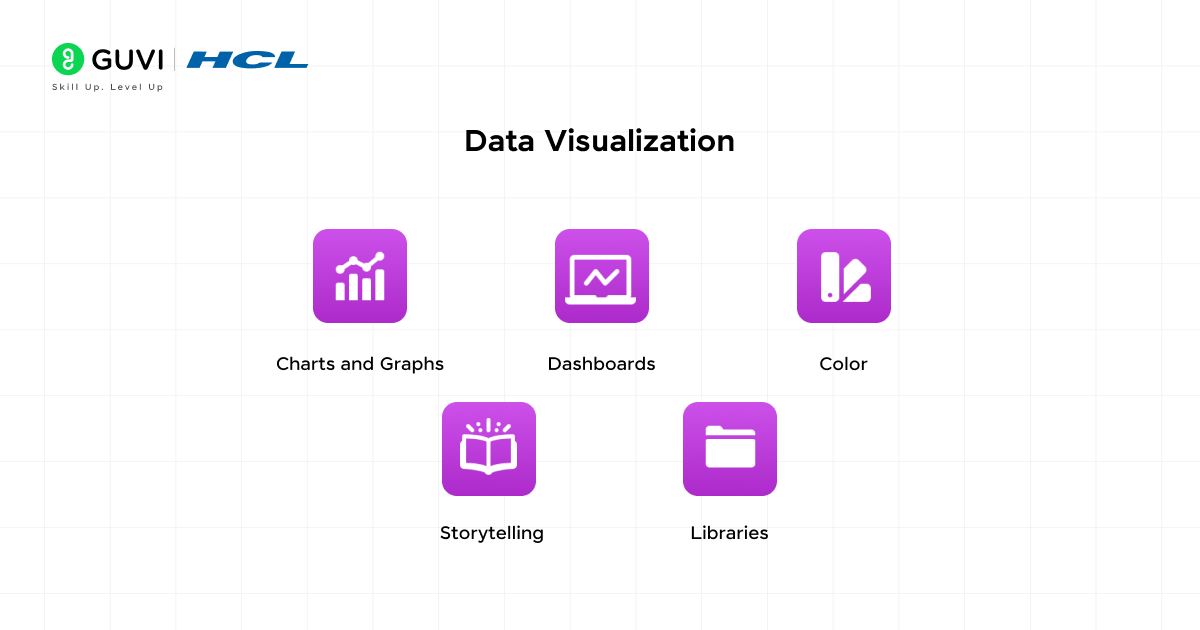
Presenting raw data to non-technical audiences can be challenging for both the presenter and the listener. This is where data visualization comes in, as it transforms the data into a visually appealing format, making it easier to communicate insights and understand the information. This skill is helpful when explaining your key findings to the stakeholders.
Some of the important data visualization techniques include bar charts, line graphs, scatter plots, heatmaps, and pie charts. It helps in identifying patterns, trends, and outliers in data.
- Charts and Graphs: It is an essential tool for compactly displaying data. Choosing the right type of graph or chart is critical for accurate representation.
- Dashboards: This is a combination of multiple visualizations into a single interface. It allows the creation of interactive dashboards that update dynamically based on user input.
- Color: Proper use of color helps to differentiate between anomalies and outliers easily.
- Storytelling: It is a soft skill one should develop to explain their findings from the visualization to the stakeholders.
- Libraries: Popular libraries for data visualization include Matplotlib, Seaborn, Plotly and ggplot2.
4. Data Mining
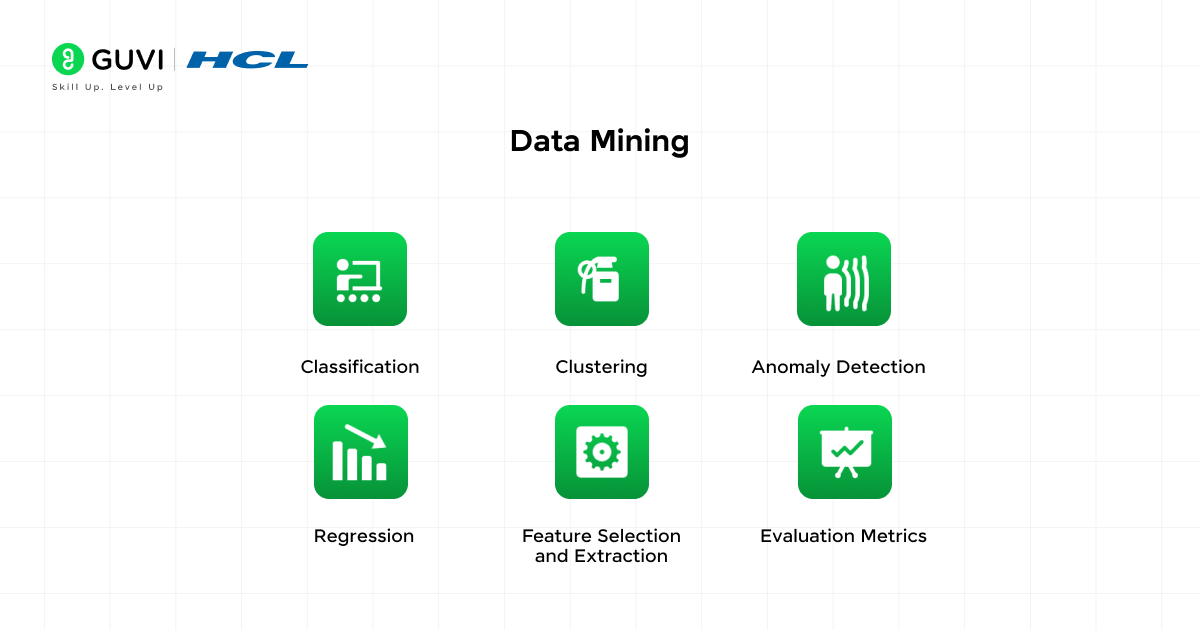
Data Mining is the process of sorting through large data sets to identify patterns and relationships that can help solve business problems. It extracts knowledge from complex and large amounts of data using various statistical techniques. Data mining techniques detect unusual patterns or outliers from the dataset, making it effective for identifying fraudulent activities in real time. Some of the important data mining techniques helpful in data science projects include:
- Classification: It assigns the data into predefined categories. It is used in tasks like spam detection or medical diagnosis. It includes algorithms such as decision trees, support vector machines and K-nearest neighbors.
- Clustering: It groups similar data points without any predefined labels. It includes algorithms such as K-Means, DBSCAN, and Hierarchical clustering.
- Anomaly Detection: It identifies data points that deviate from the normal distribution. It includes methods such as statistical approaches, isolation forests, and clustering-based techniques.
- Regression: It predicts a continuous numerical value based on input variables. It includes techniques such as Linear Regression, Lasso and SVR.
- Feature Selection and Extraction: It derives the most relevant input feature for model training. It improves the model efficiency and reduces overfitting.
- Evaluation Metrics: It assesses model performance to ensure accuracy and reliability. It includes metrics such as accuracy, precision, and RMSE.
5. Machine Learning and Artificial Intelligence
The next skill is Machine Learning(ML) and Artificial Intelligence(AI). Machine Learning and Artificial intelligence algorithms play a critical role in data science in predicting results from the data. Data Science is all about predicting the output from the data, so you can see the importance of machine learning by yourself. Choosing a correct algorithm for a specific problem is a skill itself; this can be achieved by learning the algorithms mentioned below.
- Supervised learning: These algorithms are trained on a labeled dataset and are helpful in predicting the results from a labeled dataset.
- Unsupervised Learning: These algorithms are trained on an unlabeled dataset, i.e., by grouping the relevant data. It helps predict the output from unlabeled data.
- Semi-supervised Learning: It is trained on both labeled and unlabeled datasets.
- Reinforcement Learning: It is based on a reward mechanism. These algorithms help interact with the environment to get the result.
6. Database Management
Data is crucial for data science, and managing the data is also important to analyze and store it securely for future use. Having database management skills will boost your confidence in getting into the data science field. You have to have a good knowledge on types of databases, management systems, and query languages used for extracting necessary information.
There are two types of databases, relational(SQL) and non-relational(NoSQL) databases. Relational databases are stored in a structured format with a predefined schema, it can be accessed using Structured Query Language(SQL). The most popular database management systems for relational databases are MySQL and PostgreSQL. NoSQL is are non-relational database that is stored in an unstructured format with a flexible schema, and can be accessed using APIs. The popular NoSQL providers are MongoDB and Redis.
7. Big Data
Big Data refers to extremely huge and large amounts of complex datasets that are difficult to manage and analyze using traditional methods. It stores the complex data in a form that makes it easy to extract the necessary information at high speed for processing and creating a data-driven solution. It includes various types of data, such as structured, unstructured, and semi-structured data. You should learn the important concepts in Big Data to handle and process huge amounts of data.
- 5 Vs of Big Data: It describes the big data characteristics such as Volume, Velocity, Variety, Veracity, and Value.
- Data Ingestion: It is used for processing the collected data into storage systems using various tools.
- Data Lake: It is a centralized repository that is used to store raw data in any format.
- Data Warehousing: It is a structured form of data storage optimized for analytics.
- ETL and ELT: It defines the transformation of data in the warehouse, both before and after loading.
- Data Modeling: It is used for designing the structure and relationships of data entities.
- Workflow Orchestration: It is an architecture to manage data pipelines and job dependencies.
Best Data Science Certifications
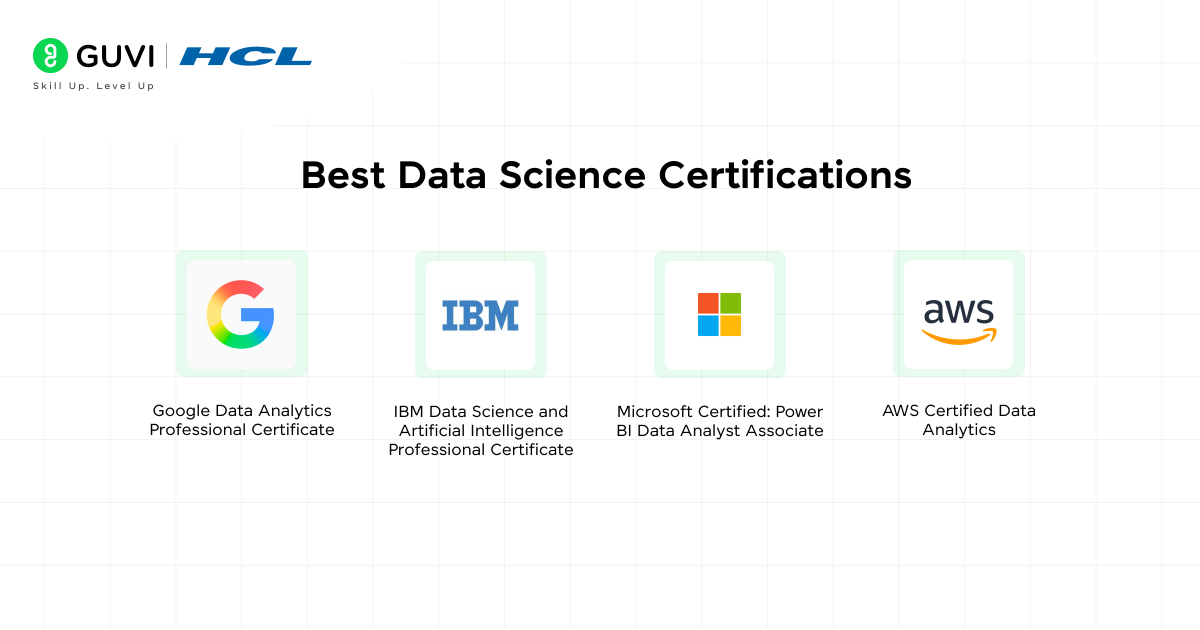
The best way to stand out from other candidates during the job application and interview process is to gain professional certifications. Data science certifications validate your skills, knowledge, and expertise in the field, making you more competitive in the job market. Gaining certifications from reputable organizations such as Google, IBM, Microsoft, and AWS enhances your credibility and leads to better job opportunities. Some of the popular certifications are:
- Google Data Analytics Professional Certificate
- IBM Data Science and Artificial Intelligence Professional Certificate
- Microsoft Certified: Power BI Data Analyst Associate
- AWS Certified Data Analytics
Getting Started with HCL Guvi
To learn about each data science subject, you do not need to go and look for resources on the internet. We provide you with the best roadmap and a bootcamp course that covers all the necessary data science subjects with detailed doubt-clearing sessions.
Check out HCL Guvi’s FREE E-book on Master the Art of Data Science – A Complete Guide. It provides a detailed data science roadmap and guide to start your career in data science. This is a great way to start your career.
Incorporating emerging trends into data science will fuel the rapid growth of this field, unlocking countless opportunities for aspiring data scientists. If you’re ready to take advantage of this moment and launch your career, enroll in HCL Guvi’s industry-recognized, certified Data Science course today.
Conclusion
In conclusion, by learning the top 7 data science subjects such as programming, mathematics and statistics, data visualization, machine learning and artificial intelligence, data mining, database management, and big data technologies will be a great start to your career towards a data scientist. Along the journey, gaining a certification in data science will boost your profile when you are applying for data scientist roles. Happy Learning!
FAQs
Q1. Do I need coding for data science?
Yes, coding is an essential skill for data science. Being comfortable with coding is crucial for tasks like data manipulation, building machine learning models, and automating processes. Python and R are the most commonly used programming languages in data science, and they have extensive libraries to make your job easier.
Q2. Is DSA required for data science?
Yes, Data Structures and Algorithms (DSA) is important for data science, especially for machine learning and data engineering. DSA helps with data management, analysis, and problem solving. It can also help you write efficient code. You can expect DSA based coding challenges during the interview.
Q3. Which language is best for data science?
The most popular and widely used language for data science is Python. It’s beginner-friendly, has a rich ecosystem of libraries (like Pandas, NumPy), and is great for tasks like data cleaning, analysis, and machine learning. For those working on large-scale systems, Scala and Julia are gaining popularity as well, especially for machine learning and high-performance tasks.
Q4. What industries hire data scientists?
Data scientists are in demand everywhere from tech giants like Google and Amazon to healthcare, finance, retail, and entertainment. Almost every industry is tapping into data to drive smarter decisions.
Q5. Is data science a good career for freshers
Absolutely! With the booming demand for data-driven insights, freshers with strong analytical skills and a passion for learning can easily find opportunities and grow rapidly in the field.
Q6. What are the subjects for data science?
1. Mathematics and Statistics
2. Programming
3. Data Visualization
4. Data Mining
5. Machine learning and Artificial Intelligence
6. Database Management
7. Big Data
















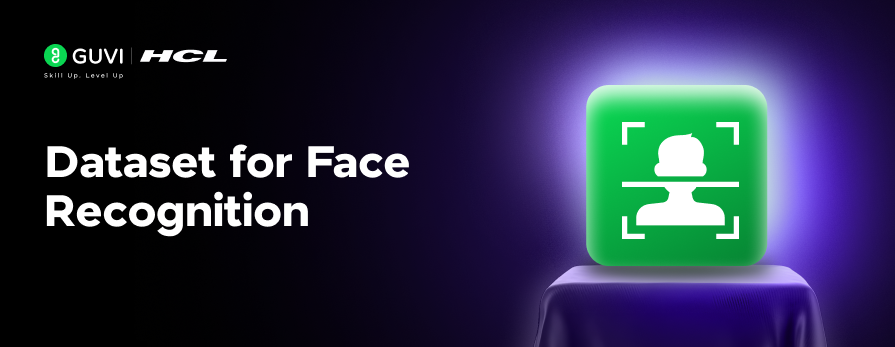
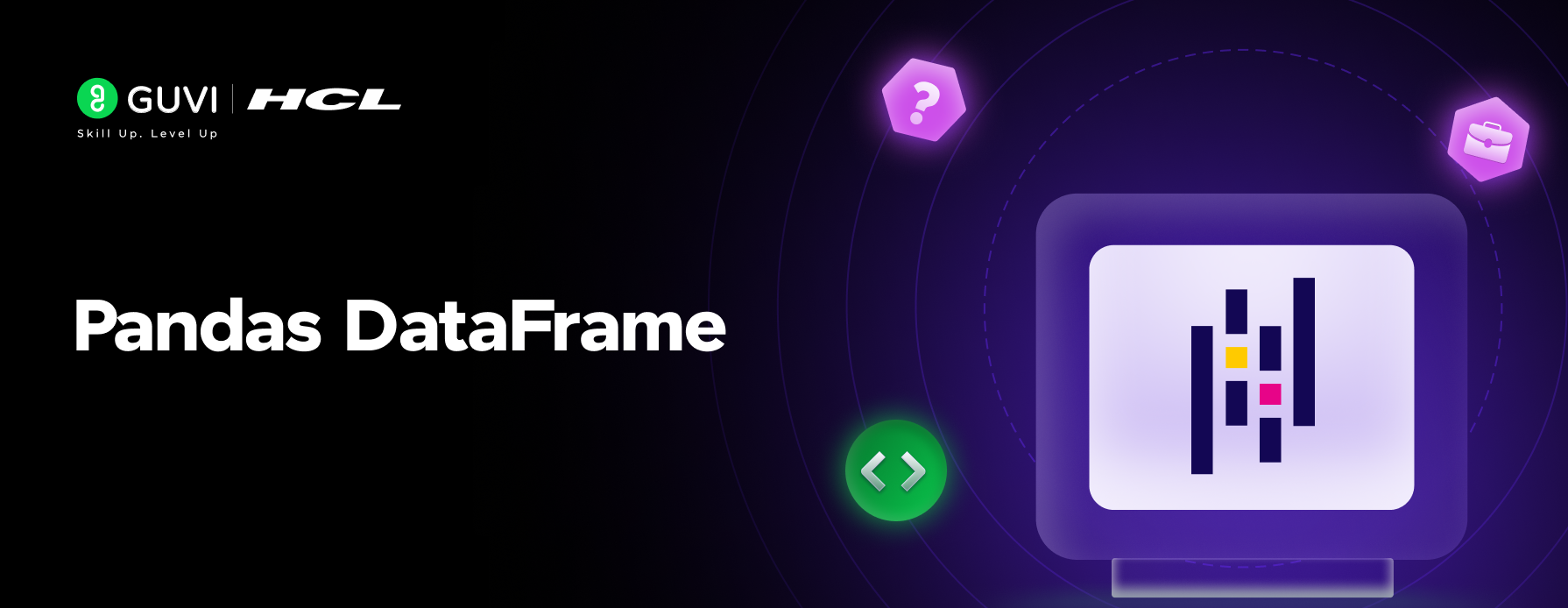
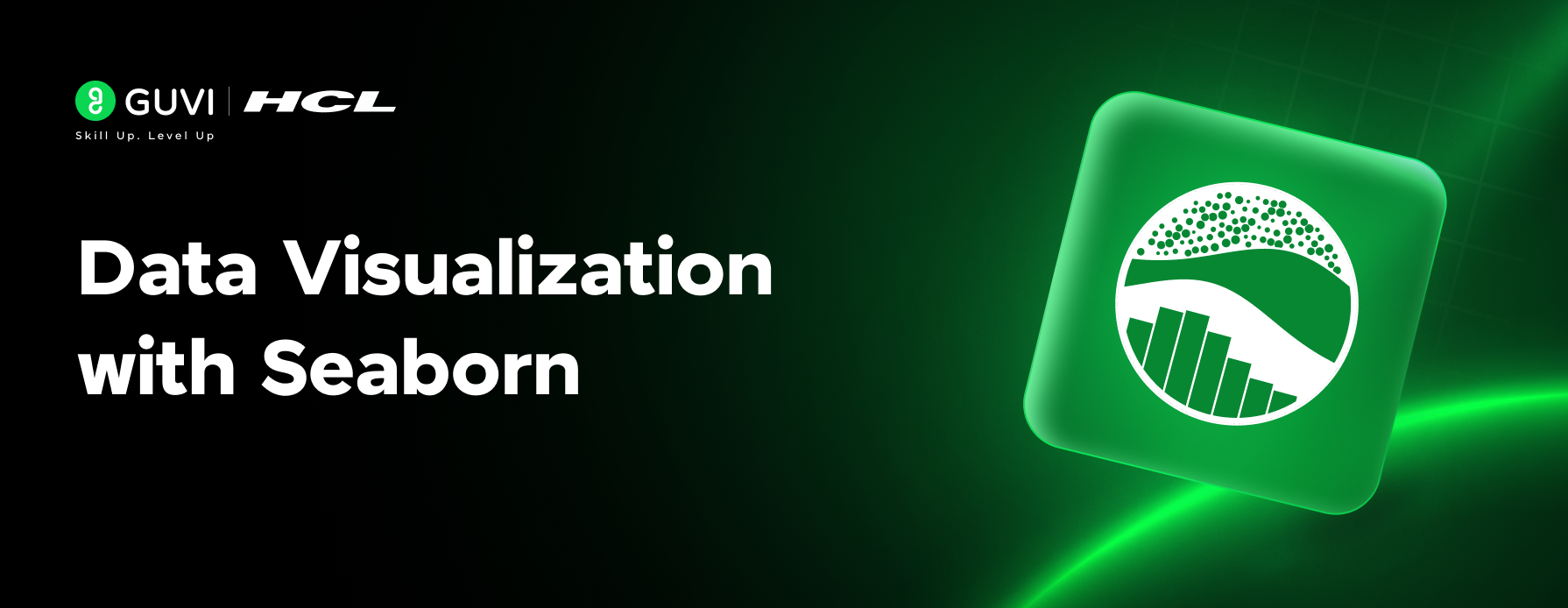
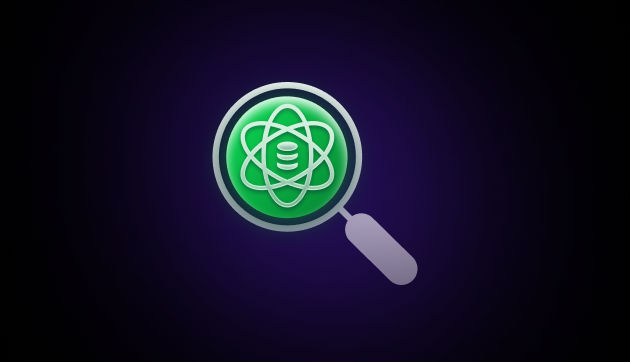
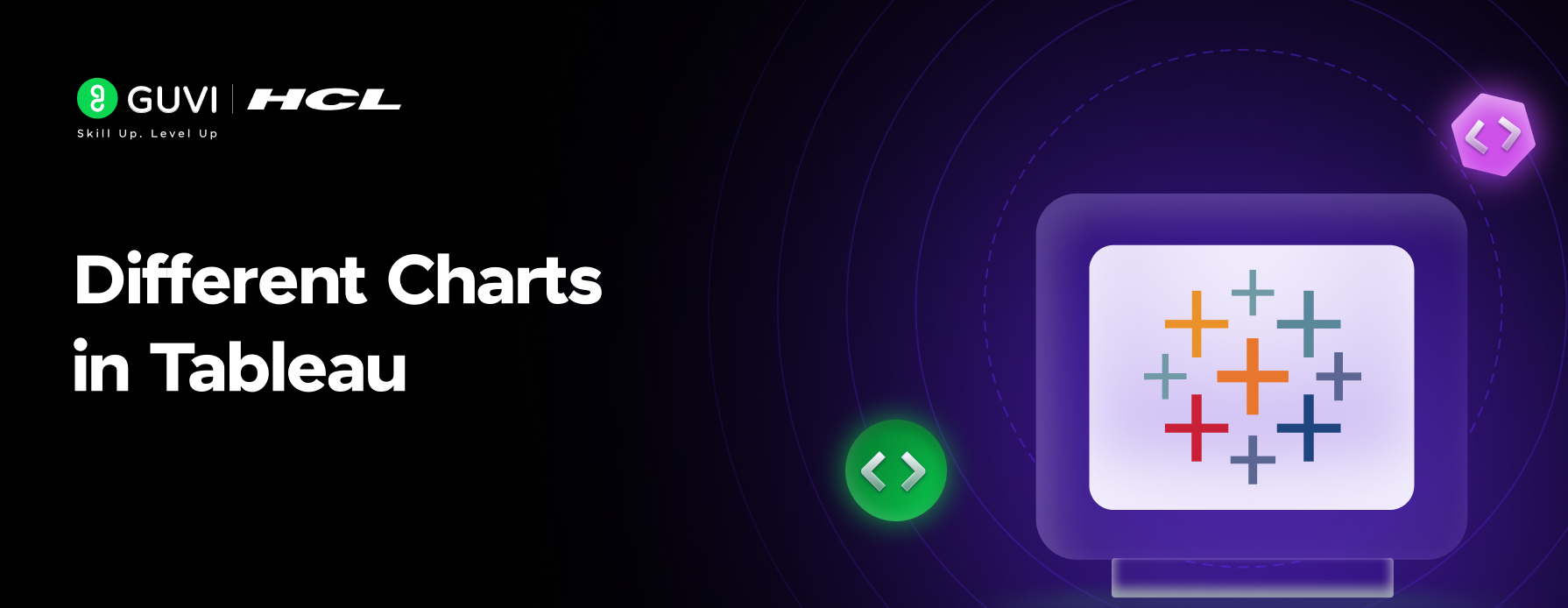
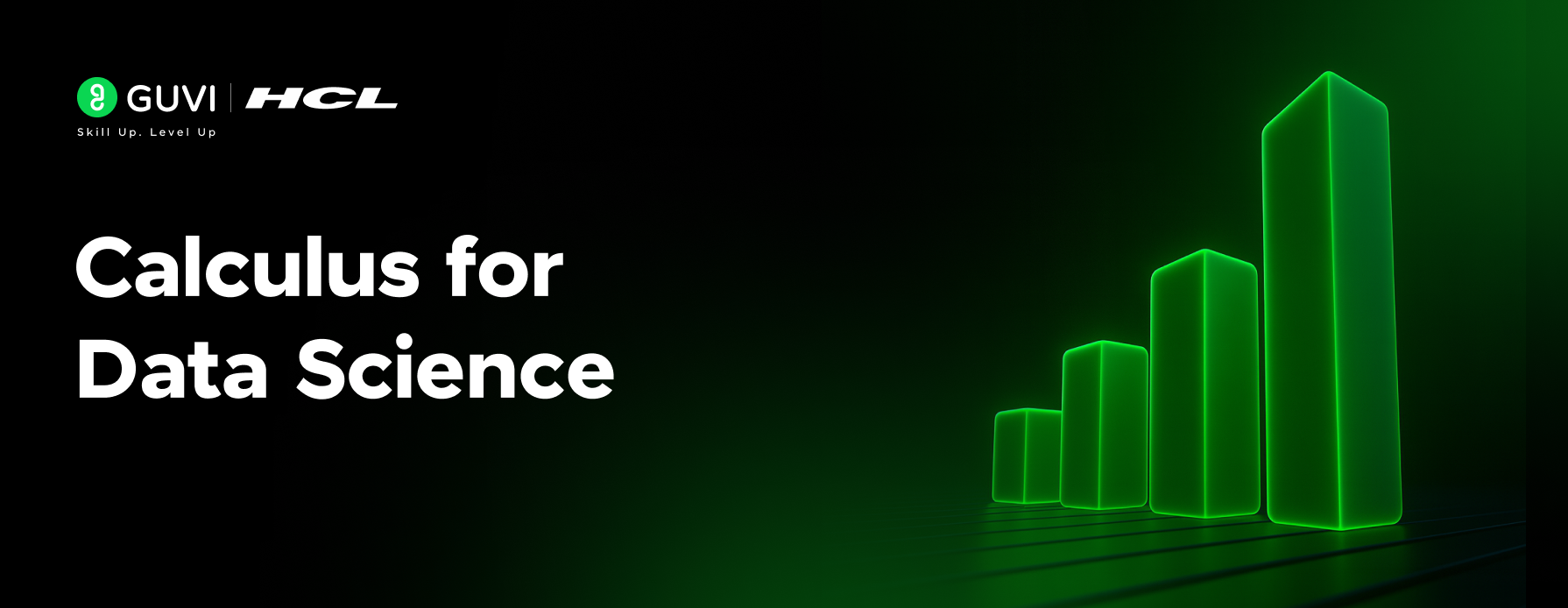
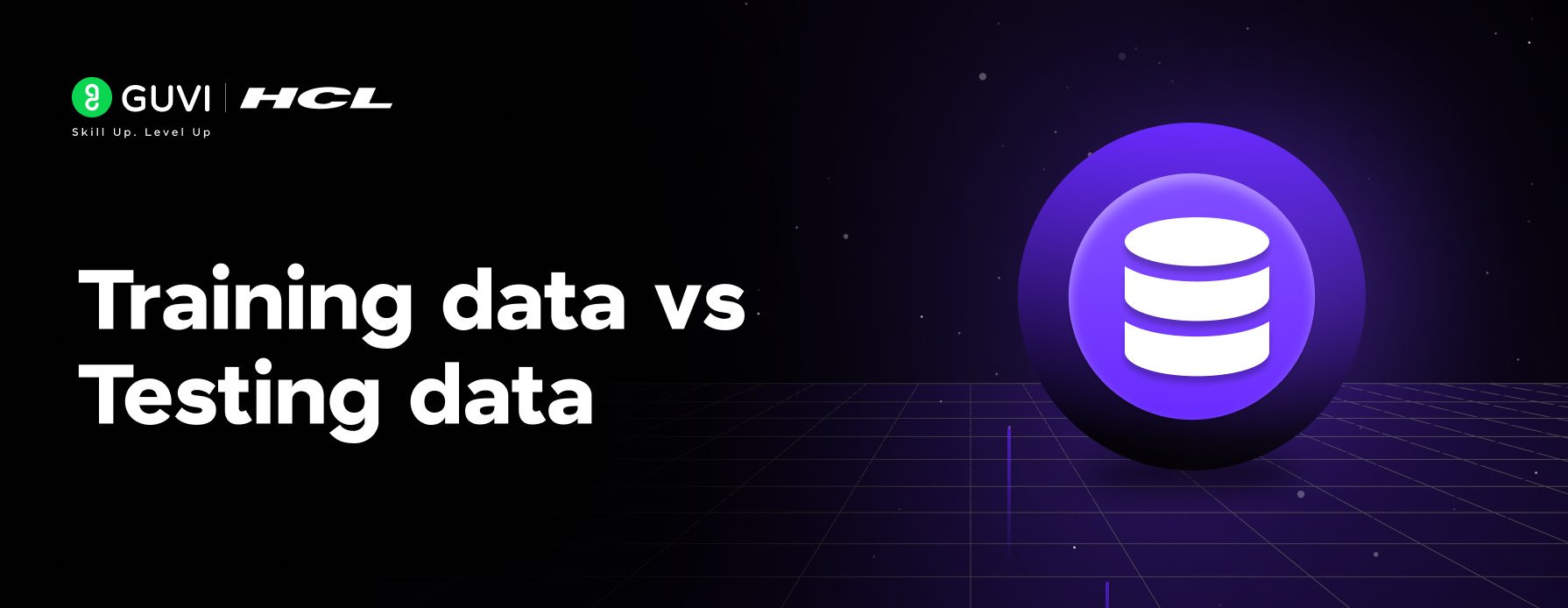






Did you enjoy this article?